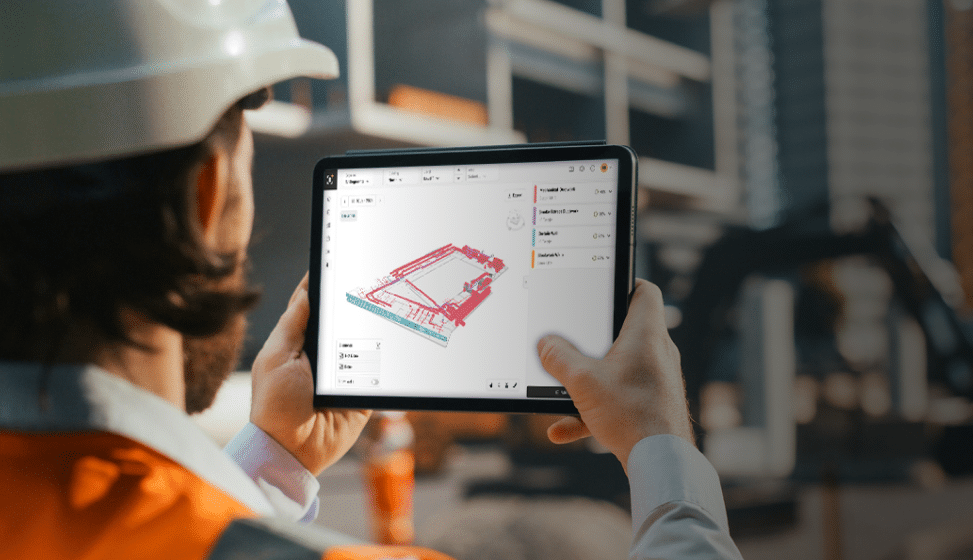Innovation Through Experimentation The Construction Industry’s Inherent Advantage

Change. Innovation. Evolution. Whatever you call it, it’s enough to overwhelm the best of us. Change is never easy, and for good reason. On one hand, technology moves at such a breakneck pace it’s easy to feel like you’ve only just embraced a new product, and it’s suddenly obsolete. On the other, you already have processes in place that work. You’ve been doing it your way for years, and business stays steady. So why try to pin down the bullet train of technology if things are working as is?
But the thing is, whether you see it as innovation or not, you’re constantly changing and adapting to new, better ways of doing things. The construction industry moves ever forward, and companies that refuse to grow eventually get left behind. I mean, when was the last time you saw someone run clash detection on a light table?
So the question becomes, how do you actively embrace new technologies with minimal risk and high ROI? How do you implement new systems without your team tearing their hair out while navigating error messages on a new online platform?
It all comes down to embracing the opportunities the construction industry provides.
The construction industry is a unique corner of the industrial world. It lacks the overbearing bureaucracy that keeps other industries tied to broken methods. The project-based work that construction companies cycle through allows for low-risk, small-scale innovation. While it can be hard to see from the inside looking out, the set-up of construction projects makes them the perfect place to experiment with new technologies.
Let’s break that down
It’s Project Based
The ongoing cycle of bidding, planning, building, repeat, which is the basis of construction work, is unique to your industry. Each project acts as its own small business with a budget, a curated team, its own set of processes, and its own outcomes.
This type of project-based work allows you to implement new digital strategies in a vacuum. By trying a new platform on just one project, you can trial things on a small scale without huge overheads. Not every single team member needs to be trained in the software, just a handful of people who have the skills and insight to embrace the challenge.
This allows you to choose the best project and team to try out new technology, keeping things low-risk. Because, let’s face it, going all-in on a platform when you’re not ready for a company-wide implementation could have big negative blow-back. By keeping your test drive small and thoughtful, you can be pragmatic about how you introduce your new tech and get stronger buy-in from your team.
It also allows you to compare the ROIs on your experimental project to similar projects that used your existing processes. This way you can ensure that the new tech is the right fit for your company and brings you the results you’re looking for.
Not a lot of industries have this ability. It allows construction companies to experiment with innovations on a small enough scale to minimize risk yet still effectively analyze results.

It Continuously Rebuilds Teams
Due to the industry’s project-based nature, teams are rebuilt, and people shift into new settings frequently. You bring on outside labor to fill gaps in large projects. Your foremen and superintendents move from job to job working with different tradespeople and connecting with outside contractors.
This means your staff is quick on their feet. They're used to adapting and adjusting to the unknown and engaging with new processes, procedures, and team members. Not a lot of industries have staff who can adapt to the unforeseen in quite the same way.
This unique feature of the industry means that your teams are primed for experimenting with new platforms. They're used to trying new things and working in new ways to meet your current project where it’s at.
And just like with choosing the right project, you can choose the best team for the job. Some foremen will be more open to giving new software the old college try than others. You know the strengths of your staff. You can pick your set of “construction scientists” who will embrace being on the cutting edge of things and give you honest feedback.
It Has Huge Potential for Returns
The usual push for innovation comes from a need to solve a problem. I’m looking at you, material management software. But limiting innovation to problem-solving means you’re just working to maintain your status quo. True visionaries see the value of technology as a way to build your business and increase your profits.
A digital strategy helps you grow your company. It allows you to branch out into new areas or to make your existing processes more efficient, bumping up your profit margin. Don’t limit yourself to only experimenting with new platforms when things aren’t going well. Use them to make your great systems even better.
The number of digital solutions coming out of the construction industry is staggering. Construction technology is growing at a much faster pace than in other industries. By building a culture of innovation and being open to experimenting with new tech, you’ll set yourself apart from the competition and position yourself as a leader in the industry.
Because You’re Dying To Ask / Let’s Cover Some FAQs
Won’t this take work to set up?
Yes, everything does. But it also takes work to do things as they are. By putting a few hours a week toward new tech implementation, the worst-case scenario is you lose a few hours a week. But your best case is massive returns if you can cut costs, speed up your schedule, save on materials, or reduce labor hours.
Is this the only solution for the company?
No. Technology will change, your business will grow, and your needs will evolve. But becoming a company with an openness to innovate means you’re able to pivot and adapt to the next upcoming tech. You’ll always be at the cutting edge with little internal stress since innovation is built into your systems.
What if it doesn’t work out?
Don’t get me wrong, even with all the advantages the construction industry has to offer, no change is risk-free. Implementing a new technology is challenging and when all is said and done, you may put time and money toward something that isn’t the right fit.
But you can work to mitigate these risks.
- Start small. One project, one team. This will greatly increase your chance of choosing the right technology and building up toward a successful implementation.
- Be thoughtful about the project and team you use to test-drive your technology of choice. Choose something that will be a good example of the abilities of the platform and make sure the team buys in.
Even the most pragmatic of us can embrace the innovations construction technology offers. Just be thoughtful in your choices, strategic in your trial set-up, and develop and track clear outcomes. You got this.
How do I make sure I’m successful?
You gotta try stuff! – The main characteristic of an innovator is being open to trying something new. A new process, a new software, a new piece of equipment, you have to foster an experimental mindset. But that does not mean channel your inner yes-man and just agree to everything.
Go into your experiments with the right framework – Choose one area you’d like to improve and do the groundwork to make sure you’re trying the right technology for that outcome. Ensure your experiment has the resources to succeed and develop a metric for what success looks like. Develop clear pass/fail criteria and a way to rate its success against similar projects.
Don’t try to improve everything all at once – There’s no way to tell what’s working and what’s not if you implement multiple systems at the same time. Pick one, implement it with strategy, give it enough time to show its worth, and measure your outcomes. Once you’ve run that platform’s full experimental lifecycle, you can look at bringing in another system.
Will It Be Worth It?
Short answer, absolutely. Long answer, if you go in with the right mindset, a good strategy, and an open-minded team, your company will prove itself to be a leader in innovation and a force to be reckoned with.
While we may have been laying bricks since the beginning of time, imagine showing up on-site with hand-drawn drawings. Innovation is inevitable. The most successful construction leaders know how to embrace innovation and seamlessly adapt new technologies for maximum benefit. So be bold, be brave, and innovate. Your future will thank you for it.




